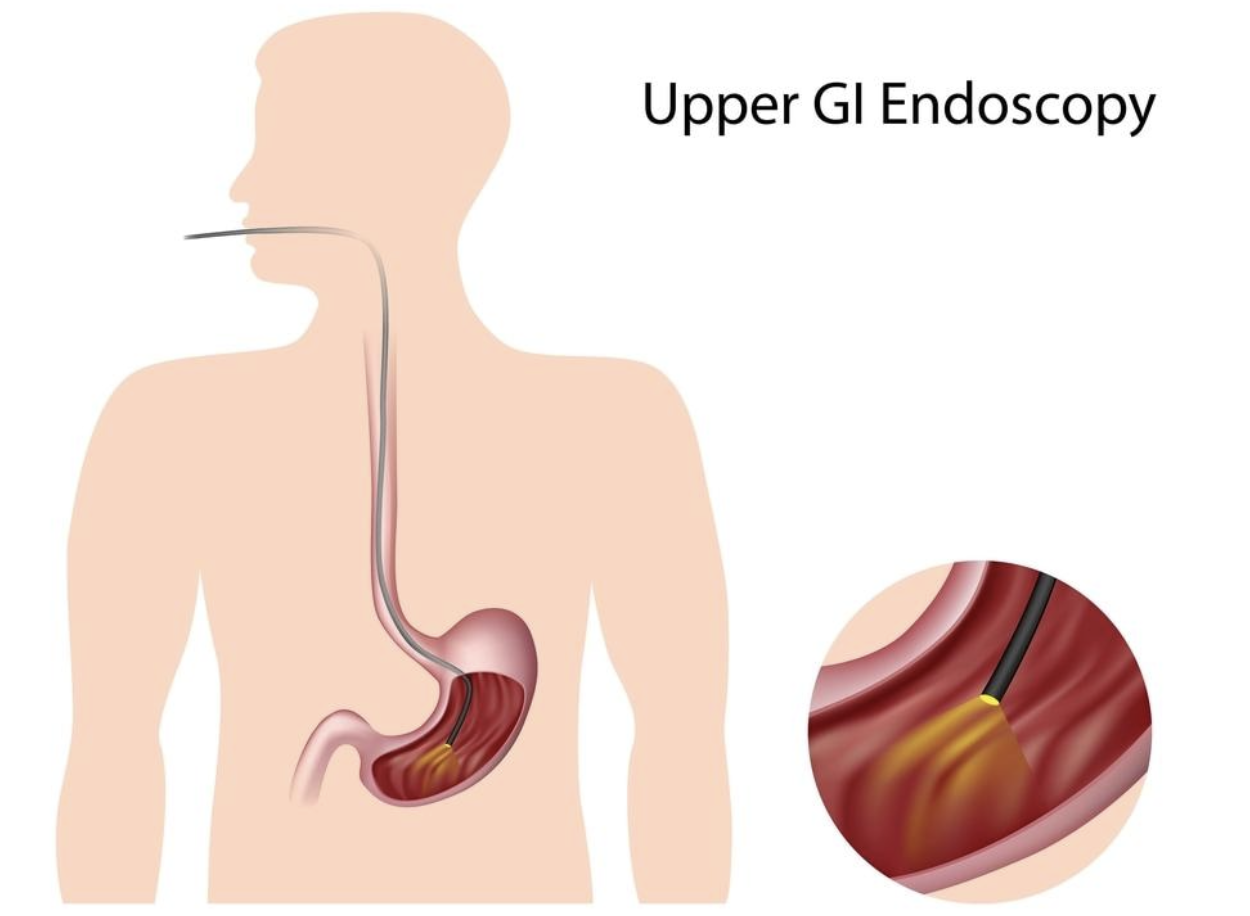胃鏡檢查簡介
胃鏡檢查是上消化道及胃部內視鏡檢查的簡稱,利用一條柔軟、細小 (直徑約1.1厘米) 且可彎曲的光學鏡頭進口腔,管道前端設有微形攝錄機,透過同步視像檢查,檢查部位包括:食道,胃及十二指腸。
哪些人士需要接受胃鏡檢查
1. 懷疑上消化道出血(嘔吐物帶血或糞便呈黑色)
2. 吞嚥困難、持續嘔吐
3. 胃酸倒流或胸口有灼熱感覺,或消化不良
4. 上腹持續疼痛
5. 胃痛
6. 食道潰瘍、胃潰瘍、十二指腸潰瘍。潰瘍可能是癌變的先兆
7. 腫瘤
8. 炎症,如道炎,胃炎
9. 貧血
10. 高危人士,如有上消化道癌家庭史之人士
胃鏡檢查前準備
1. 檢查前6小時開始禁食,目的是令排空胃部,避免檢查時嘔吐。
2. 如患有糖尿病、高血壓、藥物過敏症等病症,應在檢查前向醫生查詢有關服用藥物的安排,醫生或會建議檢查者在檢查前暫停服用某些藥物。醫生解釋檢查過程後,需要簽署檢查同意書。
3. 裝有心臟起搏器,應通知醫生。
4. 檢查前,除下眼鏡,假牙,飾物和任何金屬物品。
5. 建議安排一位人士陪伴離開,因曾注射鎮靜劑,可能會感到暈眩。
胃鏡檢查過程
1. 如選擇鎮靜注射(Sedation),醫護人員會按醫生處方施行喉嚨局部噴霧麻醉及鎮靜劑注射,令檢查者睡眠,減少不適。常見的藥物包括 Midazolam 和 Pethidine 等。
2. 如選擇監測麻醉(Monitored Anesthetic Care, MAC),麻醉科醫生會將麻醉劑以靜脈注射途徑給藥,常見的藥物包括 Propofol 和 Fentanyl 等。
3. 檢查者保持左側臥,戴上膠牙墊保護牙齒。檢查時會有先進儀器監察血壓,心跳和血含氧量。
4. 醫生會在檢查者的胃膜抽取組織樣本放入快速測試片中,進行胃鏡快速尿素試驗 (CLO Test),約一小時便可得知是否感染胃幽門螺旋桿菌。
胃鏡檢查後注意事項
1. 檢查後,檢查者會在復甦區臥床休息數小時,直到完全清醒,才可起床活動。期間醫護人員會密切監察檢查者生命表徵。
2. 喉部麻醉反應持續約1小時左右,或會感到輕微噁心,輕度喉嚨痛楚和胃脹等,不應立即飲食。
3. 曾接受鎮靜注射,檢查者會忘記部份檢查情況,感到頭暈。在檢查後,切勿駕駛車輛、操作機器,簽署重要文件和作重要決定,檢查者最好在家人陪同下接受檢查,以策安全。
